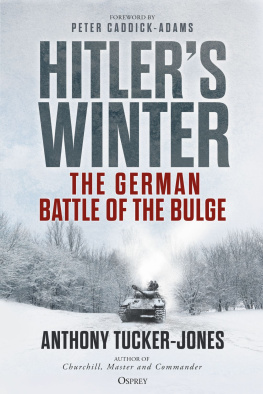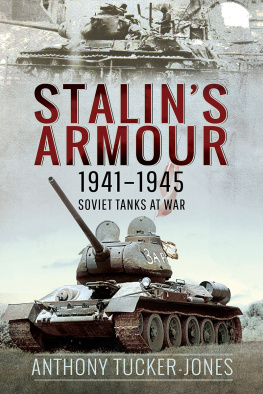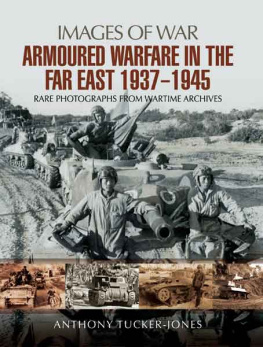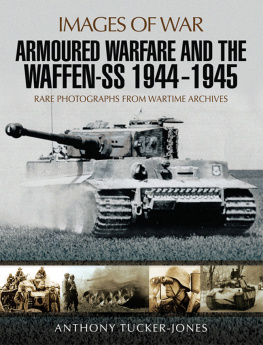Chapter One
King Boriss Bulgarian Panzers
T o this day the role played by Bulgarias panzers during the Second World War is little understood. While it is widely known that the Hungarians and Romanians fought on the Eastern Front, it is not generally appreciated that the Bulgarian Army first fought with and then against the Germans in the Balkans. Despite being allies, Hitler was able to profit from the regional squabbling of the East Europeans. In the case of King Boris of Bulgaria, he gained southern Dobrudja from Romania in 1940 thanks to Hitlers regional strong-arm tactics.
Bulgaria provided a microcosm of all that was wrong with French-designed armour in comparison to German and Czech tanks. Hitler happily supplied King Boris with captured French tanks that were too slow and lacked spare parts, greatly hampering the development of Bulgarias fledgling armoured forces.To their dismay German forces in Yugoslavia ended up under attack by Panzer Mk IVs in September 1944 manned by German-trained Bulgarian tank crews. At least ten shipments of panzers arrived in the Bulgarian capital Sofia from 194044 courtesy of Adolf Hitler.
As already stated, the Bulgarian armed forces were the least mechanised of all the satellite armies that fought for Hitler. Also, like Romania, Bulgaria had no indigenous tank capability whatsoever and by the late 1930s had just over a dozen Italian-supplied L.3 tankettes and eight British Vickers 6-ton tanks, supplemented by thirty-six Czech LT-35s. The first batch of twenty-six LT-35s was supplied by Germany in February 1940, with the rest coming directly from the Skoda factory in German-occupied Czechoslovakia. Bulgarias automobile industry was at best rudimentary and not really up to supporting the maintenance requirements of tanks.This meant the Bulgarians were largely reliant on foreign manufacturers for spare parts.
Bulgaria had to buy its first armoured vehicles, the L.3s from Italy, on credit and these were used to equip the 2nd Automobile Battalion stationed in the Bulgarian capital.This became the 1st Tank Company and the subsequent purchase of the British Vickers 6-tonners saw the formation of the 2nd Tank Company. Both companies conducted manoeuvres in 1939 and were combined to form the 1st Tank Battalion. During 1940 elements of the battalion were involved in seizing Dobrudja from Romania and were then sent to guard the Turkish border.
By the end of February 1941 Hitler was massing his troops in neighbouring Romania ready for his attack on the Soviet Union; however, he was distracted by the prospect of British forces landing at Salonika to support the Greek Army in fending off the Italians operating out of Albania. Hitler decided he must first secure southern Thrace between Salonika and Dedeagach, which he would then hand over to the Bulgarians to police. King Boris acceded to the Tripartite Pact on 1 March 1941 and German troops stationed in Romania crossed the Danube and took up station in Bulgaria ready to attack Greece. Boris provided the Bulgarian 5th Army (with fewer than sixty totally inadequate tankettes and light tanks) to support the invasions of Greece and Yugoslavia.
The Yugoslav capital of Belgrade was occupied by German and Hungarian troops on 13 April 1941. The Bulgarian 5th Army followed the panzers across the frontier, occupying most of Yugoslav Macedonia and moved to administer the Greek regions of Eastern Macedonia and Western Thrace, much to the irritation of Italian leader Benito Mussolini.The Bulgarians greatest concern was their traditional foe Turkey and they had no intention of tying up their army in Greece and Yugoslavia. Up until 1944 the regular armys field divisions remained deployed on the Turkish border, leaving reservist formations to act as occupation forces. Such was their brutality in Macedonia that no significant partisan activity emerged until 1944.
King Boris and his high command were in awe of the panzers blitzkrieg into the Balkans and sought to create their own armoured forces, albeit with paltry means. In June 1941 the Bulgarians formed their 1st Armoured Regiment under the vigilance of German instructors. This consisted of the 1st Tank Regiment equipped with the Italian L.3s, Czech LT-35s and captured French R-35s, and the 1st Mechanised Infantry Regiment. The Bulgarians were pleased with the Czech armour but not the French tanks.The initial shipment of R-35s was found to have parts missing, suspected to be the result of sabotage.They were soon discovered to be mechanically unreliable and slower than the Skodas.
While both the R-35 and LT-35 had the same principal armament in the shape of a 37mm gun, that was largely where the similarities ended.At almost 10 tons in weight the R-35s engine could muster 82 horsepower, generating just over 12mph and a range of 87 miles. In contrast the Czech LT-35 with a similar weight and 120hp was capable of double the speed and had a 120-mile range. The only advantage the Renault had over the Skoda was its thicker armour, which stood at 45mm compared to 35mm.
Armoured exercises conducted in October 1941 showed just how useless the French R-35s were, when much of the 2nd Tank Battalion failed to reach the training grounds due to breakdowns. The lack of radios and armoured cars also proved a problem and it was not until the following year that the situation showed any signs of improvement.
Toward the end of 1942, the Bulgarians became alarmed by German weapons deliveries to neutral Turkey, so as a counter-weight Hitler agreed to equip ten Bulgarian infantry divisions, one cavalry division and two armoured brigades. The Germans provided the Bulgarians with the Panzer III and IV as well as StuG III assault guns in July 1943. The slow Renaults were assigned an infantry support role. The following month King Boris died and successive prime ministers tried to extricate Bulgaria from its corrosive relationship with Hitler. Bulgarias 1st Assault Gun Battalion was formed in June 1943 and the 2nd Battalion three months later.
In total Hitler supplied King Boris with over 260 panzers, which on the face of it seems quite a generous gesture, particularly in comparison with the Finns who only received seventy-seven tanks and Italy just 177. The Hungarians did slightly better with 385 panzers and Romania 350. Hitler, though, was not in the business of giving away precious armour that would be better deployed with the Wehrmacht. On closer inspection Hitlers shipments to his Balkan ally consisted of thirty-six Skodas and sixty-five Renault tanks, ten Panzer Mk IIIs and eighty-eight Mk IVs as well as fifty-five StuG III assault guns.
After the Bulgarian experiences with the Renaults, in early 1944 when twenty-five French Hotchkiss-built H-39s and Somua-manufactured S-35s were supplied by Hitler, they were assigned to border units and the police. Like the Renaults these tanks, weighing in at 11 and 19 tons respectively, were slow, managing only 17.5mph. They knew that the Germans had offloaded junk onto them.
Hitler probably hoped that the Bulgarian armour would eventually be committed to his crusade against Bolshevism in the east. In the event it was to end up fighting Bulgarian and Yugoslav partisans and the German Army.While Bulgaria had taken part in the destruction of Yugoslavia and Greece, King Boris was less keen to entangle himself with his Russian Slavic cousins. Arguing that his army lacked mechanisation, Boris prudently avoided taking part in Operation Barbarossa .
Although Bulgaria resisted calls to join the war in Russia it provided reinforcements to alleviate pressure on German security forces in the Balkans. In January 1942 the Bulgarian 1st Army occupied most of Serbia and from mid-1943 was fighting Yugoslav partisans in Western Serbia. In the summer of 1942 Hitler had to intervene in Italian-occupied West Macedonia after clashes between the Bulgarians and Italians.

















